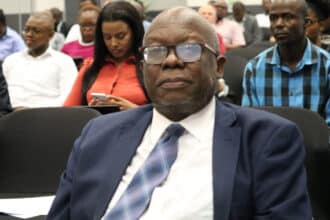Bots keen to power-up Battery Manufacturing relationship
With a population verging on 100 million (the ever-reliable Wikipedia has it at 95.9 million) and access made easier thanks to Kazangula Bridge, the Democratic Republic of Congo (DRC) has huge potential to become one of Botswana’s leading trade partners.
While the two nations have traded goods in the past, opportunities have been overlooked, something both countries are keen to put right going forward.
Speaking at the Botswana-DRC Business Forum last Thursday, Botswana Investment and Trade Centre (BITC) CEO, Keletsositse Olebile confirmed they are looking to strength economic ties with DRC.
Describing the Central African nation as an economic power house with vast resources, Olebile revealed one area Botswana and DRC were keen to explore was battery manufacturing.
“The process requires three components. Cathode is a positive terminal which needs base metals such as Nickel, manganese. All these are found in Botswana and we already stand well to join our value chains with others in the region. On the other hand, negative terminals, which are anodes, are made of graphite and carbon which is available in DRC.
“Further, the connecting medium is facilitated through Lithium, which is available in abundance in DRC. For us to be able to anchor the battery manufacturing sector which is the key transition path of global mobility, we have to connect our value chains as countries,” reasoned Olebile, noting that from the 300 battery manufacturing companies earmarked to setup up operations globally, not a single one is based in Africa.
“That’s the reality that we face but raw materials actually come from Africa,” highlighted Olebile, his remarks causing much head-nodding and murmuring from the audience.
From 2017 up until last year, Botswana exported goods worth US$29, 351, 773 to DRC, which include amongst others: reactor boilers, machinery, meat & edible meat offal, live animals, medical equipment & accessories and beverages & spirits.
Moving the other way, imports over the six-year period stood at just under US$8 million and were largely made up of: chemicals, vehicle parts and accessories, oil seeds, grains, fruits, tools, implements and cutlery.
Going forward, however, these figures could be drastically bigger!







